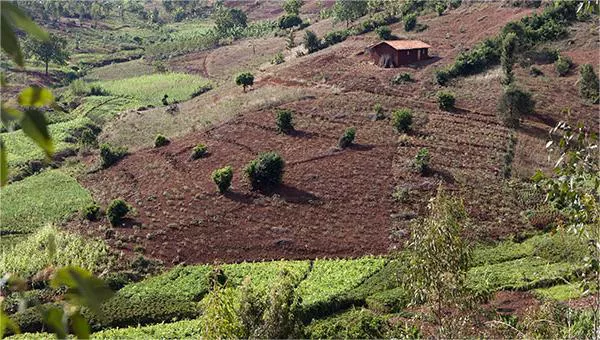In recent years, a surge in food prices has burdened populations worldwide, prompting growing concerns for the welfare of agricultural producers. Multiple factors contribute to this escalation, from geopolitical tensions to the enduring impacts of the COVID-19 pandemic, and the accelerating effects of climate change. As a result, farmers, retailers, and consumers alike find themselves grappling with the repercussions.
Among the myriad challenges, drought and land degradation stand out as particularly menacing threats to both livestock and crop cultivation globally. Exacerbated by climate change, these phenomena have prompted urgent calls for the protection and restoration of land on this year’s World Environment Day. The aim is to combat land degradation, drought, and desertification, thereby yielding immediate social, economic, and environmental benefits.
Statistics paint a dire picture of the widespread impact: an estimated 3.2 billion people worldwide, spanning regions such as East Africa, India, the Amazon basin, and significant portions of the United States, suffer from the adverse effects of land degradation and drought. Even in Europe, where summer has yet to peak, certain areas have already been placed on drought alert. Projections indicate that within the near future, one in five individuals in China will confront heightened drought risks, while Australian farmers brace for a prolonged megadrought spanning two decades. Over the next 25 years, land degradation threatens to slash food productivity by 12 percent and inflate food prices by nearly a third, with average family incomes poised to drop by 20 percent due to climate change—an issue of global concern.
The repercussions of delaying action on climate and nature loss are dire, perpetuating a vicious cycle wherein climate change exacerbates soil degradation, rendering farming endeavors increasingly laborious and less profitable. This, in turn, necessitates heightened reliance on subsidies, chemicals, and fertilizers to eke out meager yields from increasingly infertile land. The result: diminished nutritional quality of food and exacerbation of the triple planetary crisis encompassing climate change, nature and land loss, and pollution and waste.
Nevertheless, there is cause for optimism in the potential for nature to rejuvenate itself. Remarkable outcomes have already emerged from various initiatives aimed at rehabilitating degraded farmlands, forests, savannas, grasslands, peatlands, and urban landscapes. Such endeavors, spanning regions from the Mediterranean to Africa, South and East Asia, and Small Island Developing States like Vanuatu, have rendered vast expanses arable once more and generated hundreds of thousands of employment opportunities. Notably, areas such as the Central American corridor, which were formerly reliant on external aid, have achieved self-sufficiency following robust restoration efforts.
Expanding these initiatives promises benefits for nature, society, and economies alike. According to a report by the United Nations Environment Programme, the cost of inaction dwarfs that of proactive measures, with every US dollar invested in restoration yielding up to $30 in economic returns. Recognizing this, UN member states unanimously designated the current decade as dedicated to ecosystem restoration, with governments worldwide pledging to restore a staggering 1 billion hectares of land—an area surpassing the size of China. Last year, six nations committed to restoring 300,000 kilometers of rivers and 350 million hectares of wetlands, bolstering not only natural ecosystems but also food security and livelihoods while advancing climate goals by facilitating carbon sequestration.
As Saudi Arabia prepares to host the 2024 World Environment Day and the largest-ever UN conference on land and drought, with a focal point on land restoration, desertification, and drought resilience, there is palpable anticipation for the initiatives ahead. With three-quarters of arable land in the Middle East already succumbing to degradation and the region experiencing climate warming at twice the global average rate, the imperative for action is urgent. Without intervention, the entire populace faces water scarcity by 2050.
On this World Environment Day, observed annually on June 5, individuals are urged to take action. Whether through organizing or participating in local events, integrating nature-centric goals into business practices, or conscientiously considering climate and nature policies in voting decisions, collective action is imperative. The challenges posed by the cost-of-living crisis and the plight of farmers are real, but so too is the solution: the restoration of land and ecosystems to foster a resilient food system, healthier natural environments, enhanced incomes, and a stable climate.
Related Topics:
























